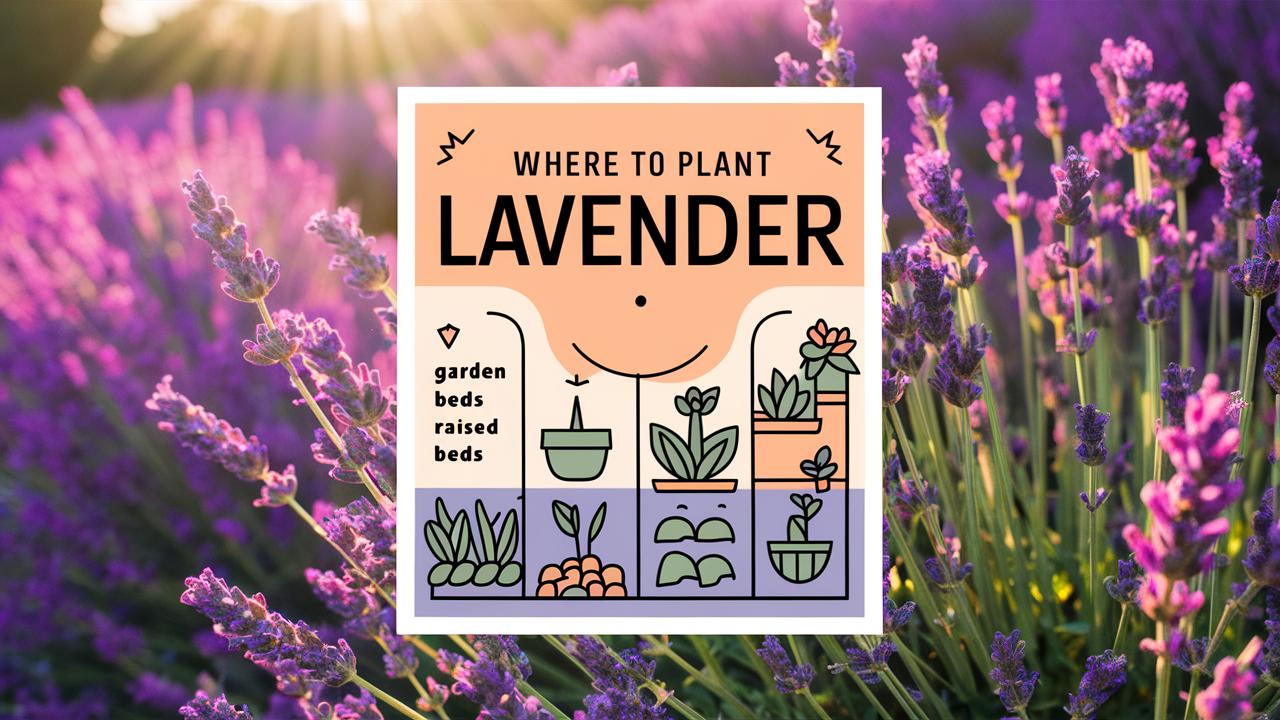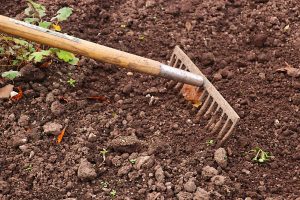This guide will cover the important factors to consider when selecting the ideal location to plant lavender, ensuring your plants thrive and fill your garden with their serene charms.
Understanding Lavender Varieties

Before embarking on a lavender-planting journey, it is crucial to understand the varieties available. The most common types include:
English Lavender (Lavandula angustifolia): Renowned for its fragrance and hardiness, this variety thrives in cooler climates and can withstand winter frosts.
French Lavender (Lavandula stoechas): This type flourishes in warmer climates and is characterized by its unique flower spikes adorned with bracts.
Spanish Lavender (Lavandula latifolia): This variety is known for its robust growth and is well-suited to mild winters and hot summers.
Hybrid Varieties: These include Lavandula x intermedia (lavandin), which are known for their high oil content and adaptability in various conditions.
Knowing which variety suits your environment is crucial, as it will guide your planting decisions.
Assessing Climate Requirements
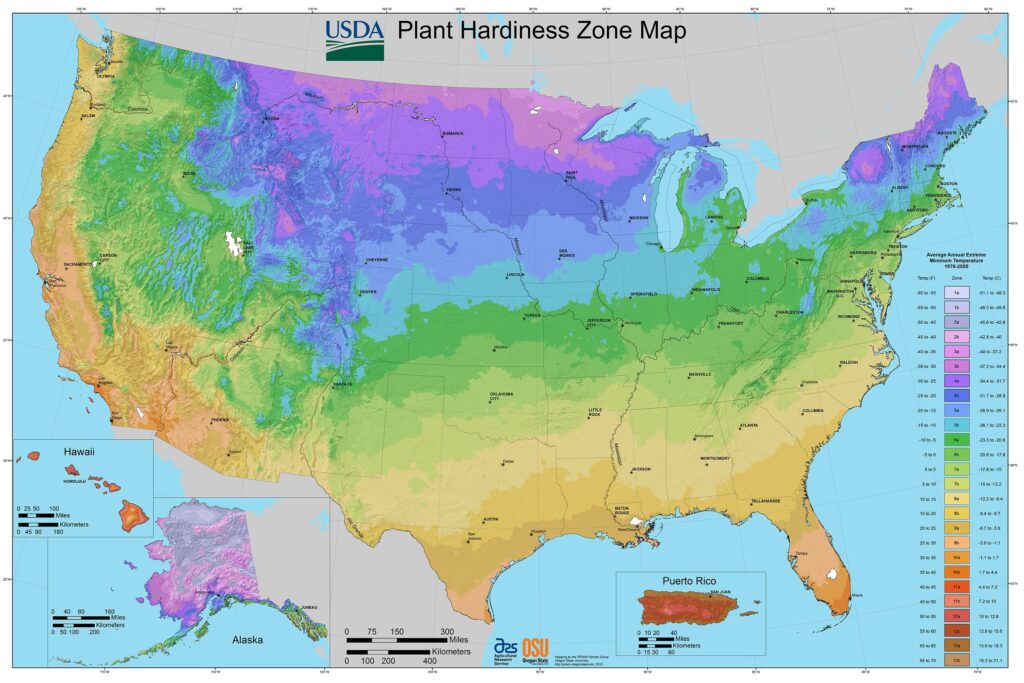
Lavender is a sun-loving plant that thrives best in specific climates. Most lavender varieties flourish under Mediterranean-like conditions, characterized by dry summers and mild winters. Here are key aspects of climate that influence lavender growth:
Temperature: Lavender generally prefers temperatures ranging from 60°F to 80°F during the day. Excessive humidity and extreme cold can lead to plant stress, mold, and diseases.
Sunlight: Aim for a planting location that receives full sun for at least 6-8 hours a day. This ensures strong growth, vibrant blooms, and aromatic leaves. Insufficient sunlight will result in leggy growth and decreased flower production.
Rainfall: While lavender is drought-tolerant once established, it prefers a low to moderate amount of rainfall. Overly moist conditions can lead to root rot and fungal issues. Adequate drainage is critical, so consider your region’s average rainfall when selecting a planting spot.
Soil Type and Preparation

Lavender has specific soil preferences that must be met for optimal growth. Here’s a deeper look into what you need to know about soil when planting lavender:
Drainage: Lavender requires well-draining soil to prevent waterlogging, which can be detrimental to its health. Sandy or gravelly soils work best, as they allow excess water to escape.
Soil pH: Ideal soil pH for lavender is between 6.0 and 7.5. It can tolerate slightly alkaline conditions, so a test for soil pH can help you understand whether amendments are necessary.
Organic Matter: While lavender doesn’t require overly fertile soil, a small amount of organic matter can be beneficial. Compost mixed into sandy soil can help promote healthy root development without overwhelming the plant.
Soil Amendments: If your soil is heavy or clay-based, consider adding sand or perlite to improve drainage. Avoid high-nitrogen fertilizers, as they can promote leafy growth at the expense of flowers.
Finding the Right Location in Your Garden
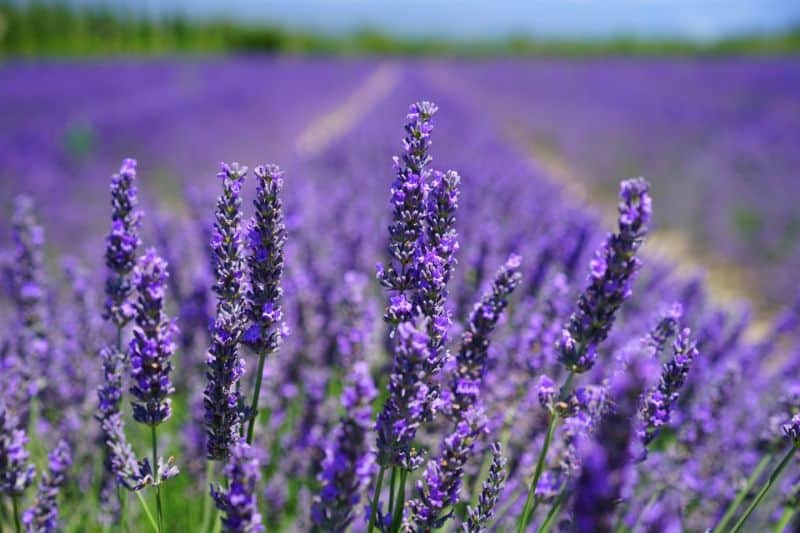
Selecting the perfect location in your garden for planting lavender is a mix of understanding its needs and assessing your garden landscape. Here are some aspects to consider:
Sun Exposure: Identify areas in your garden that receive ample sunlight throughout the day. South-facing slopes are often ideal, as they maintain warmth and light exposure.
Wind Protection: While lavender enjoys sun, harsh winds can damage the delicate flowers. Planting lavender near a natural windbreak, such as a fence or a row of taller shrubs, can provide refuge from severe gusts.
Spacing: If planting multiple lavender plants, ensure they have adequate space between them. They typically require 18 to 24 inches of spacing to allow for air circulation and growth.
Accessibility: Consider placing lavender near pathways or terraces where you can easily harvest the flowers or enjoy their fragrance. This not only enhances the atmospheric quality of your space but also encourages care and maintenance.
Companion Planting: Finding Friends for Your Lavender
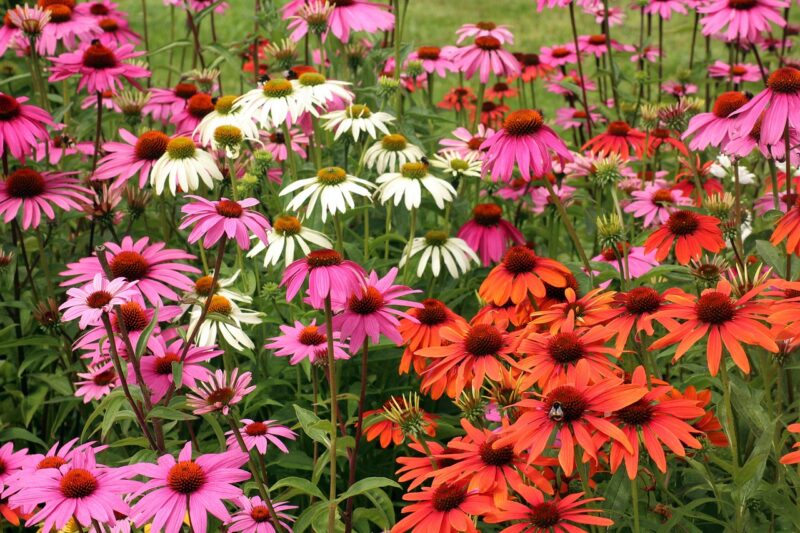
Companion planting can encourage healthy growth for your lavender while enhancing the beauty of your garden. Here are some plants that thrive alongside lavender:
Rosemary: This Mediterranean herb shares similar soil and sunlight needs, making it a perfect companion. Plus, the two complement each other in culinary dishes.
Thyme: Low-growing thyme varieties work well under lavender bushes, offering pleasing aromas and vibrant greenery.
Sage: Not only does sage flourish in similar conditions, but it also attracts beneficial pollinators when blooming.
Echinacea (Coneflower): The vibrant blooms of echinacea offer a striking contrast to lavender, and both plants thrive in similar soil and light conditions.
In contrast, avoid planting lavender with moisture-loving plants, as this can lead to poor growth and disease development.
Time of Year for Planting Lavender
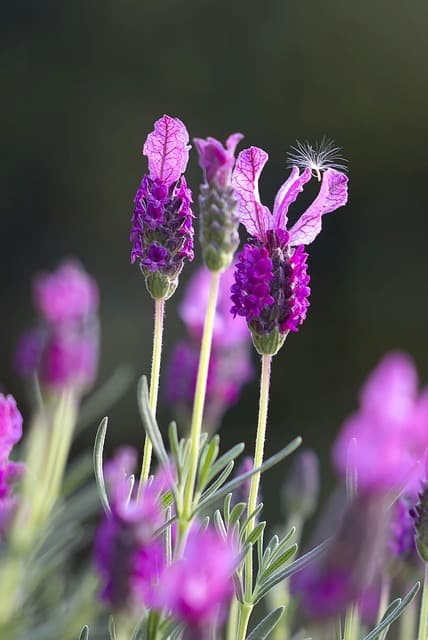
Selecting the right time to plant lavender is crucial for success. Generally, the best times to plant lavender are:
Spring: As frost threats are over and the soil warms, spring planting allows lavender to establish roots and take full advantage of the growing season.
Fall: In milder climates, fall planting can be favorable, welcoming cooler temperatures to aid root growth before winter dormancy.
Avoid planting lavender during the peak summer heat, as this can stress young plants and negatively affect establishment.
Best Practices for Planting Lavender
Once you’ve chosen the right location and timing, it’s time to get your hands dirty. Here are best practices for planting lavender:
Digging the Hole: Create a hole that is about twice the width of the plant’s root ball. This encourages roots to spread easily into the surrounding soil.
Place and Backfill: Gently place the lavender plant in the hole, ensuring that the top of the root ball is level with the surrounding soil. Fill in with soil, lightly patting down to eliminate air pockets.
Watering: Water the newly planted lavender thoroughly to help settle the soil. After the initial watering, allow the soil to dry between waterings, especially if the weather is hot.
Mulching: Add a thin layer of mulch around the base of the plant to suppress weeds and retain moisture. Opt for gravel or small stones, as organic mulch can increase moisture retention too much.
Ongoing Care for Your Lavender Plants
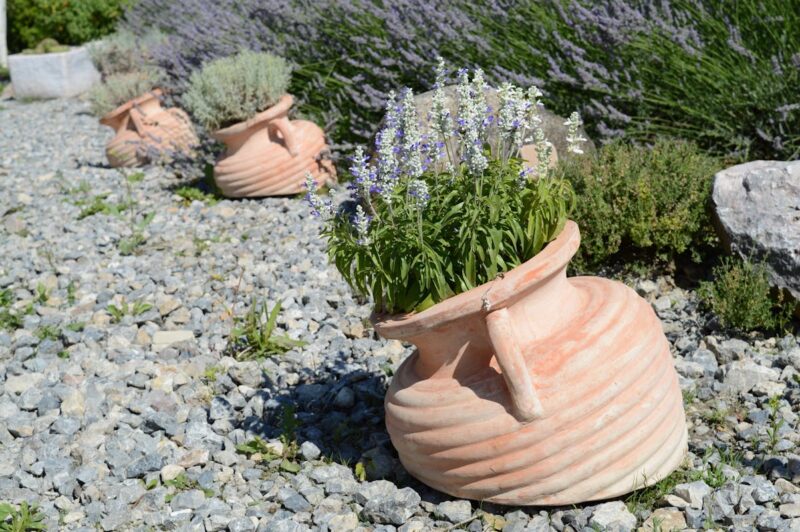
Proper care after planting is vital for achieving robust lavender plants. Here are essential tips for ongoing maintenance:
Irrigation: Once established, lavender thrives on minimal water. Water deeply but infrequently, allowing the soil to dry out between waterings. Be astute to environmental conditions, as rainfall may reduce your need for irrigation.
Fertilization: Lavender is not a heavy feeder. A light application of a low-nitrogen fertilizer in early spring can promote growth, but generally, lavender prefers neglected soil.
Pruning: Regular pruning after flowering helps maintain shape, improve air circulation, and encourage new growth. Trim back stems to about one-third of their height in late summer or early fall.
Pest and Disease Management: Keep an eye out for pests like aphids or spider mites and treat infestations promptly. Proper spacing and airflow can mitigate the chance of diseases like root rot.
Creating a Lavender Field or Border
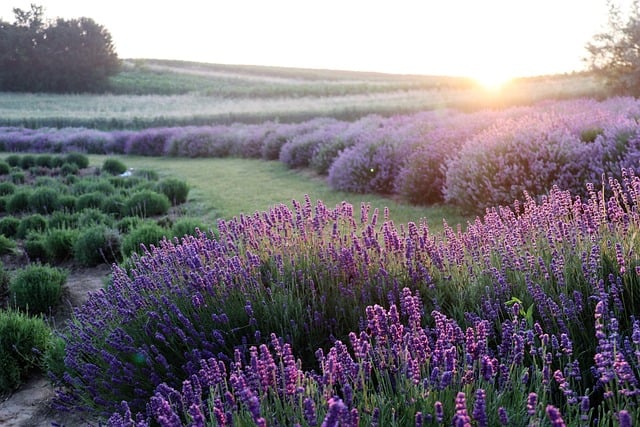
If you’re passionate about lavender, why not create a dedicated lavender field or border in your garden? This stunning visual spectacle will not only be lovely to behold but will also provide a multitude of benefits:
Design and Layout: Plan your lavender layout carefully, forming straight rows or gentle curves to create visually pleasing patterns. Alternate different varieties for color contrast.
Pathways: Incorporate walking paths made of gravel or stone to enhance accessibility and create an inviting space for relaxation and enjoyment.
Supporting Wildlife: Planting a larger area with lavender can attract bees, butterflies, and other beneficial wildlife, significantly contributing to pollination and ecosystem health in your garden.
Harvesting and Using Lavender
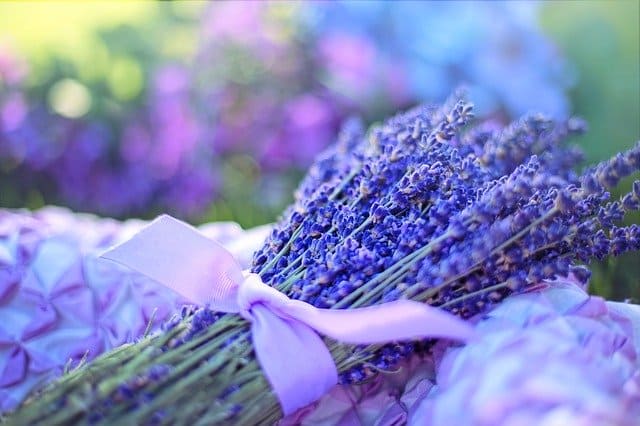
Once your lavender starts to bloom, it’s time to enjoy the fruits of your labor. Besides their natural beauty, lavender offers a wide range of uses from culinary to aromatic.
Harvesting: Cut lavender stems early in the day when the moisture levels are still low but before the heat of the sun is high. Aim for when the flowers are in full bloom, as this is when they are most aromatic.
Culinary Uses: Fresh or dried lavender can be used in various recipes, from desserts to savory dishes. Make sure to use culinary lavender varieties for safe consumption.
Aromatic and Therapeutic Uses: Dried lavender is commonly used in sachets, essential oils, and aromatherapy. Its calming scent promotes relaxation and can aid sleep.
Crafting: Lavender is also popular in crafts and DIY projects, from making lavender sachets to infused oils and candles. These can make wonderful gifts or personal treasures.
Conclusion
Where to plant lavender can significantly influence its growth and overall contribution to your garden. From understanding the diverse varieties and climate needs to selecting the right soil and location, every aspect matters. Remember to consider companion planting, seasonal timing, and ongoing care to cultivate a flourishing lavender display.


